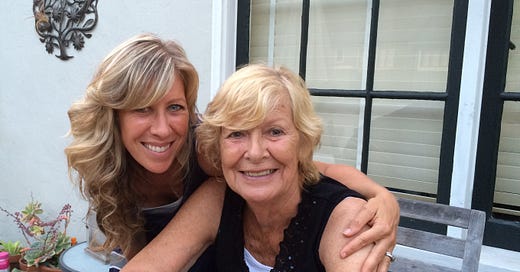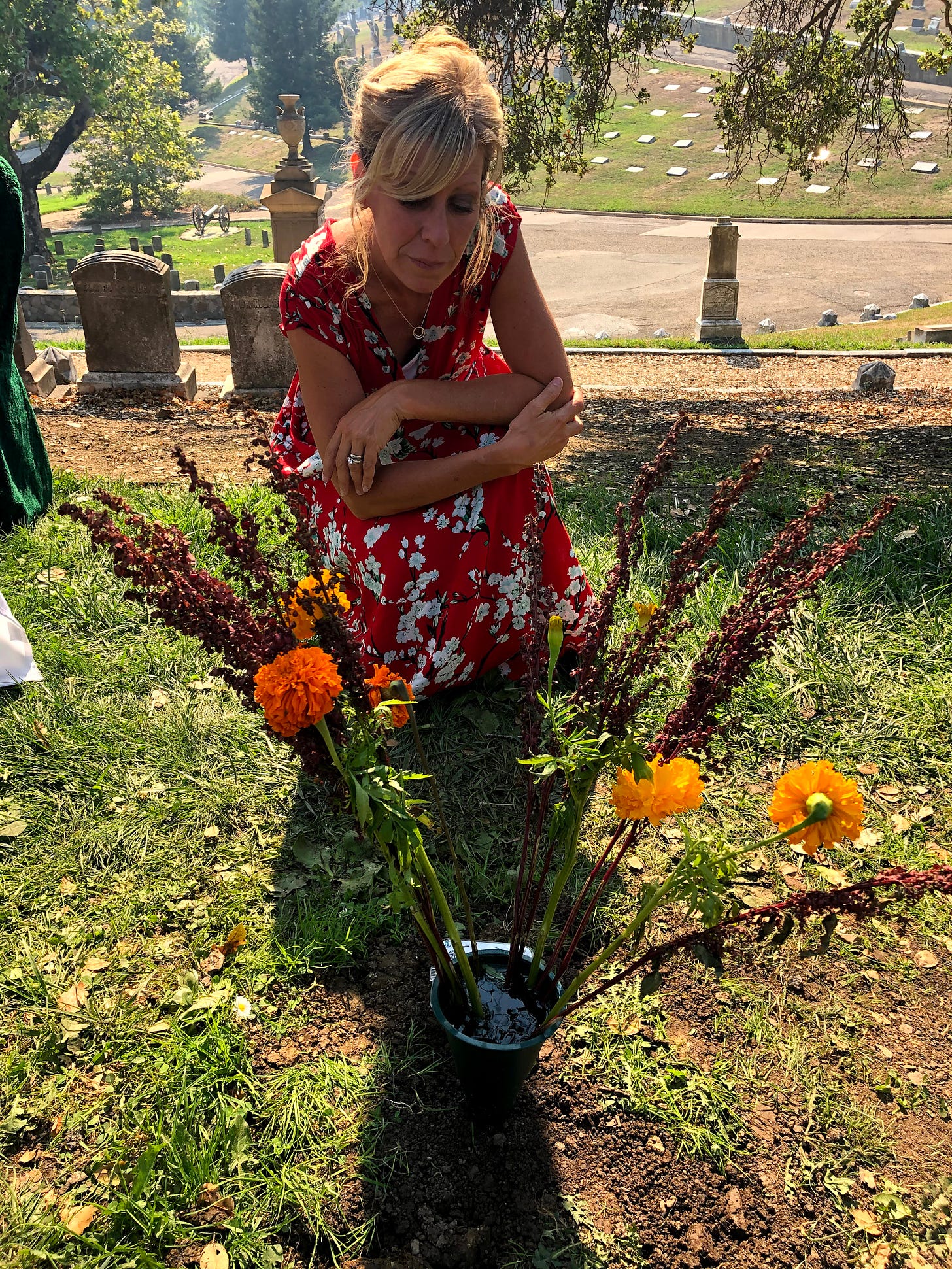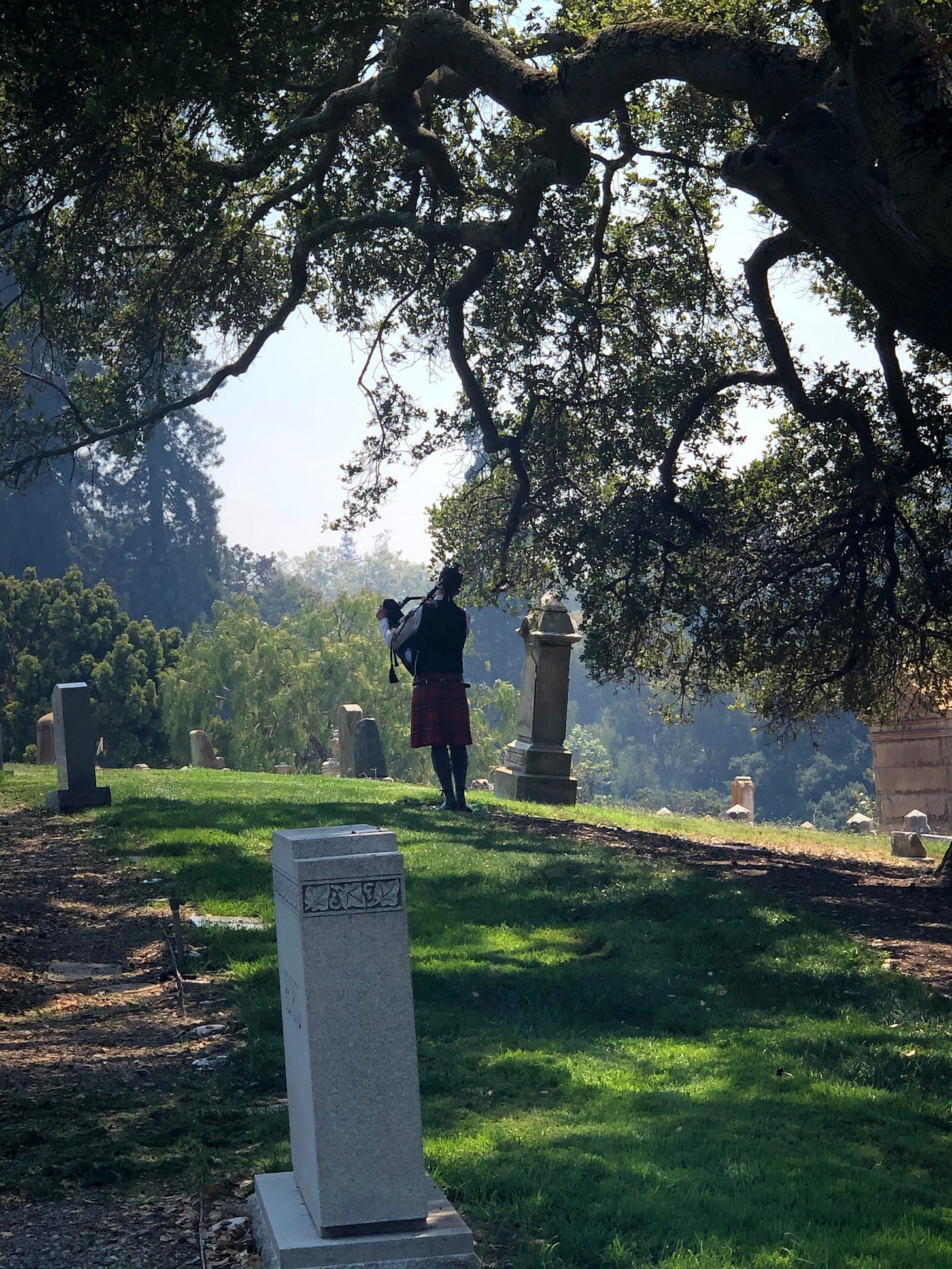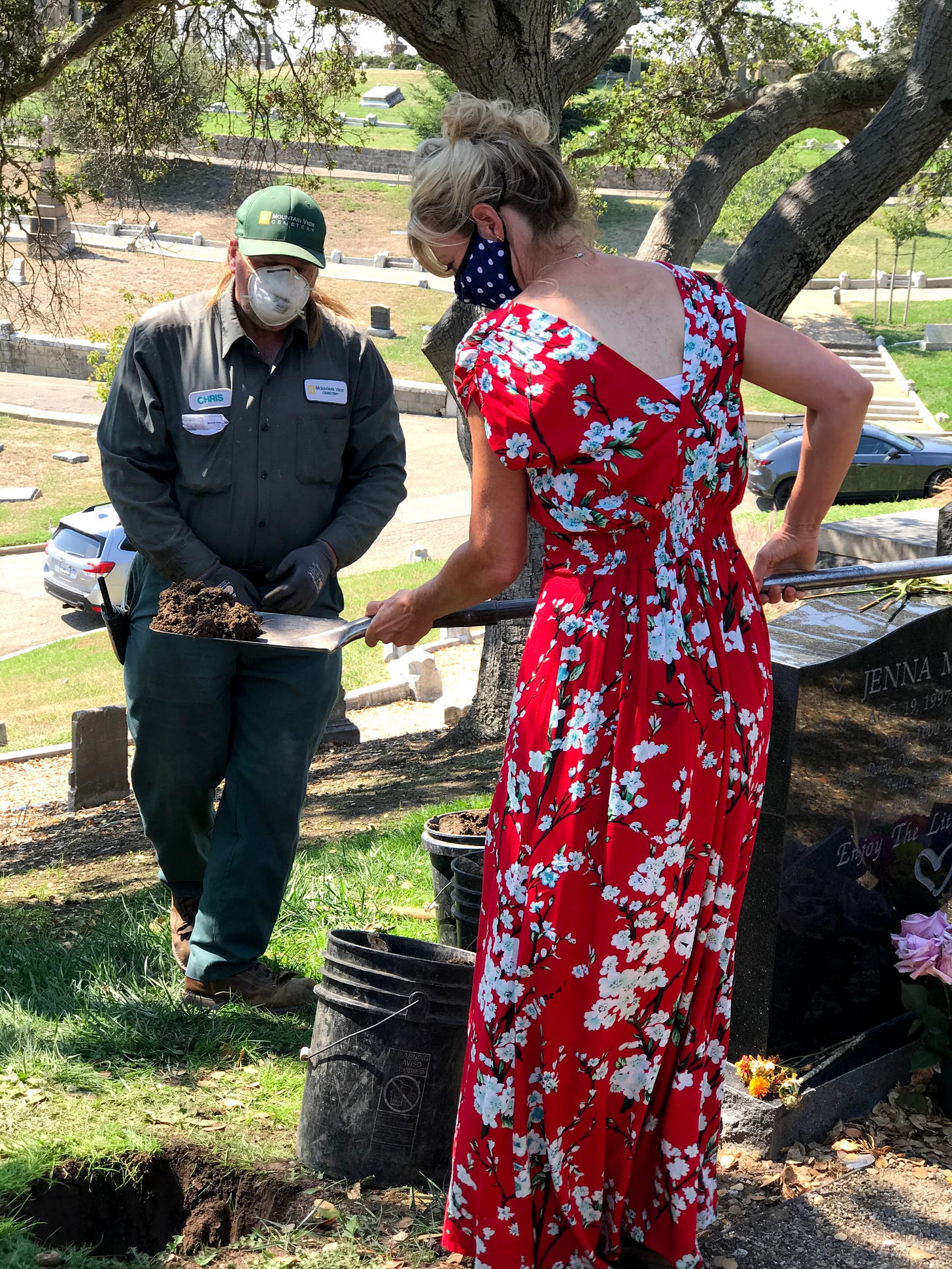How We Heal: The Power of Grief Rituals
Grieving is hard. Grieving the death of a parent even harder. Grieving without the usual end-of-life rites and rituals was nearly impossible, until I found a way.
I hope you don’t mind this pause from my usual topics to mark the anniversary of my mother’s death—and to offer a moment of solace for anyone who has grieved, or is grieving now, the loss of someone they love. When my mother died during the height of the Covid-19 pandemic, and I was unable to take part in the usual end-of-life rituals, I came to understand just how essential those observances are to grieving and healing. I share this in the hope that it brings you comfort, too.
The Phone Call
On April 21st, 2020, my mother died in a nursing home 3,000 miles away from me with no friends or family by her side. She was declining by the time the Covid-19 pandemic halted us in our tracks and made it impossible for me to fly from California to New Jersey to be with her in her final days.
Grieving is hard. Grieving the death of a parent even harder. Grieving without the usual end-of-life rites and rituals was nearly impossible.
In my past experiences with death, I learned that aspects of the dying process makes the mourning process a little easier — a little less disorienting, a little less chaotic: keeping vigil, sharing memories, watching, waiting, and witnessing all provide an anchor for the grief that is to come.
But not so with the death of my mother.
Getting a phone call in the dead of night was not the same as being able to see her, touch her, say goodbye, watch her go. Calling her friends and family to share the sad news was no substitute for gathering to reminisce and memorialize her life. Walking out my front door and stumbling upon the box that contained her ashes was a gut punch — not a consolation.
The lack of closure left a fissure that I came to realize could be filled only with some familiar rites of passage — writing her obituary, creating a memorial photo album, planning a celebration of life — delayed and altered though it would be.
The Wish
Before she fell ill, my mother and I talked about what she wanted me to do with her ashes once she was cremated. Ever practical, she argued that she’d be gone and wouldn’t know the difference, so whatever was meaningful for me — the living — should take precedence.
By that time, my husband and I had already begun making arrangements for our own final plans, and after much thought and many conversations, we decided on a grave in Oakland’s historic Mountain View Cemetery — a special place we have visited and cherished for many years. My mother’s death accelerated our process and confirmed our decision, so we purchased a plot that all of our ashes would be interred — mine, my husband’s, and my mother’s.
Even though she said it didn’t matter to her whether or where she was buried, I think it did. In life, I think my mother often struggled to be seen. By interring her ashes and marking her grave, she will be. We’re still working on her pillow stone, but once it’s in place—with her name and the roles she held so dearly: mother, sister, friend, grandmother—she will have a place in the world, etched in stone, where she’ll be seen by those who loved her and by passersby who will now know her name.
While my mother didn’t have much to say about where her ashes would eternally reside (though I know she would love the resting place we chose), she did have some very specific thoughts about what her memorial service would include: she wanted photos and stories, laughter and music, and a bagpiper to play — among other songs — Danny Boy.
Never before had I been so eager to fulfill a wish, and I began planning her celebration of life that would take place on August 21, 2020 at Mountain View Cemetery at what was now our family grave.
The Service
By August of 2020, the United States had recorded nearly 180,000 Covid-19-related deaths, so traveling to California wasn’t an option for her boyfriend, friends, sisters, brothers, or my own sister. And so, the guest list consisted of me, my husband, and our friends—most of whom had never met my mom. Still, they showed up for me, safely masked and socially distanced.
To include the voices of those who couldn’t be there, I reached out to friends and family and asked them to send stories, memories, and reflections about Arlene —anything they cherished. I then invited my friends to each read those tributes aloud.
It was the closest I could come to creating space for shared memories and laughter. A memorial by proxy. But it worked. In their voices, my mother’s life was reflected back — familiar, funny, and full of love.
And slowly, with each act, I began to feel a shift—from the procession of cars arriving to the stories my friends read about my mom, from the sound of the bagpiper playing to the small packets of bird seed I handed out to scatter in honor of Arlene, who always kept a feeder outside her window.
But it was the moment I shoveled dirt over her grave—the final act of burying her urn—that I felt the space between grief and healing begin to narrow. I wasn’t trying to “get over” my mother’s death so much as I was trying to get to the other side of the chasm that had loomed for months. And it worked.
It worked, because rituals, even improvised ones, help us hold the weight of loss.
The Closure
Death and grief rituals exist in every culture for a reason: they comfort the living, mark the passage, and give shape to something otherwise formless. Psychologists and anthropologists alike have shown that rituals — even simple ones — help us feel more grounded and less helpless in the face of grief. They don’t erase the pain, but they create structure when everything feels suspended.
Without that bridge, mourning felt like an unhealed wound.
But the service we created—the gathering, the stories, the laughter, the tears, the music, the final act of burial—became that bridge. It didn’t take away the pain, but it gave it a container. It gave it shape. And in doing so, it gave me something to walk across.
Grief remains, but now it has somewhere to rest.
Thank you for reading. In sharing this, I feel it’s one more way my mother is seen, especially if it helps someone else in grief.












You express this so beautifully, Colleen. I know so many of us can relate in some way. Your words lead me to reflect on the passing of my parents several years ago, and the feelings (and grieving process) associated with these losses. Sending you wishes for comfort and peace on this anniversary.
As always, what beautiful, poignant words. Thank you for sharing with us.